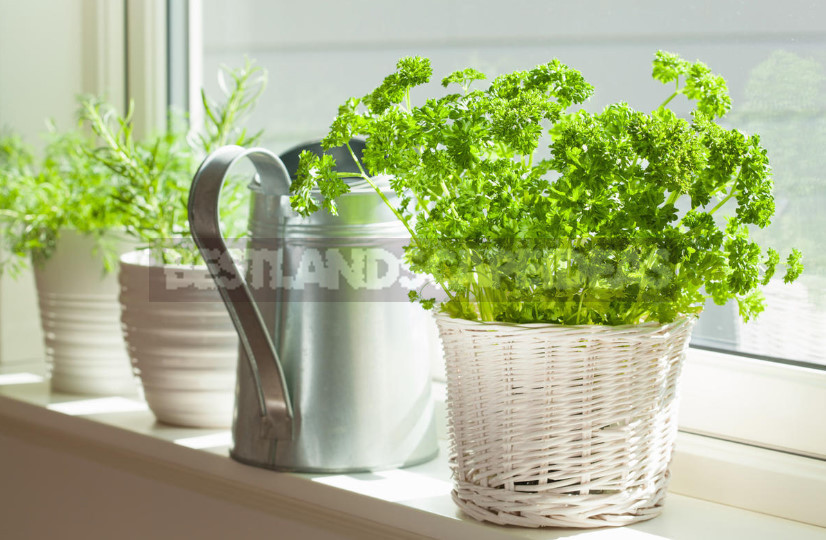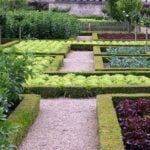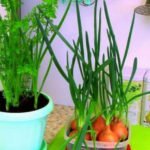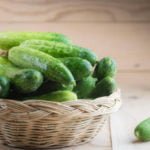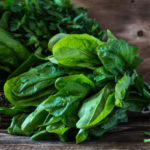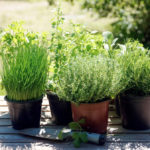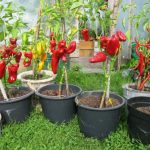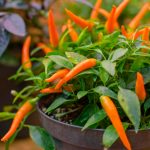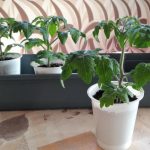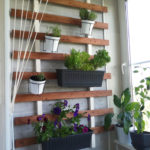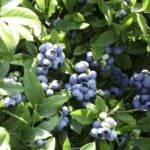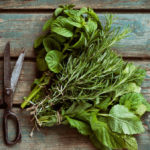A long time ago, a man firmly linked his life with spicy and flavoring plants. Mention of them found in ancient writings of China, Egypt, India, Greece, Rome. So, from time immemorial especially revered was Basil.
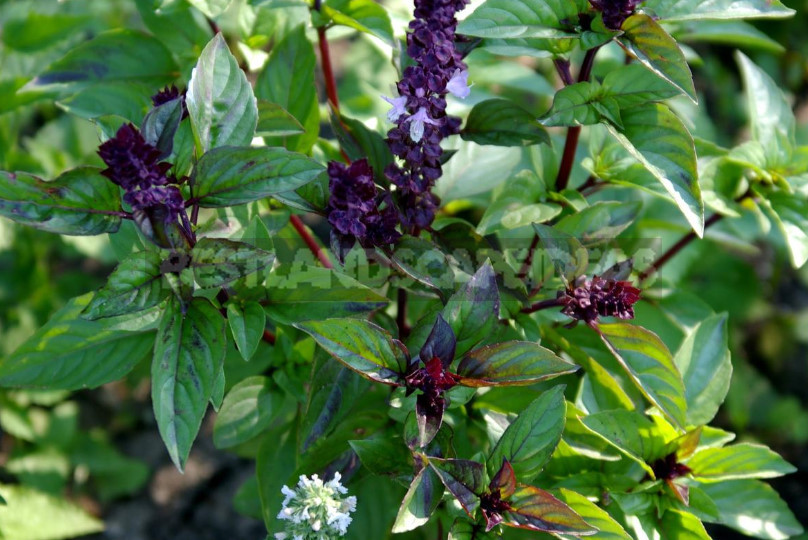
He was highly respected by the Greeks, who even associated his name with the ruling Royal blood – the Basileus.
Rosemary was dedicated to the goddess Aphrodite. It was believed that it has a beneficial effect on memory and mind, so sprigs of rosemary adorned hairstyles, and noble persons daily took baths from the rosemary water.
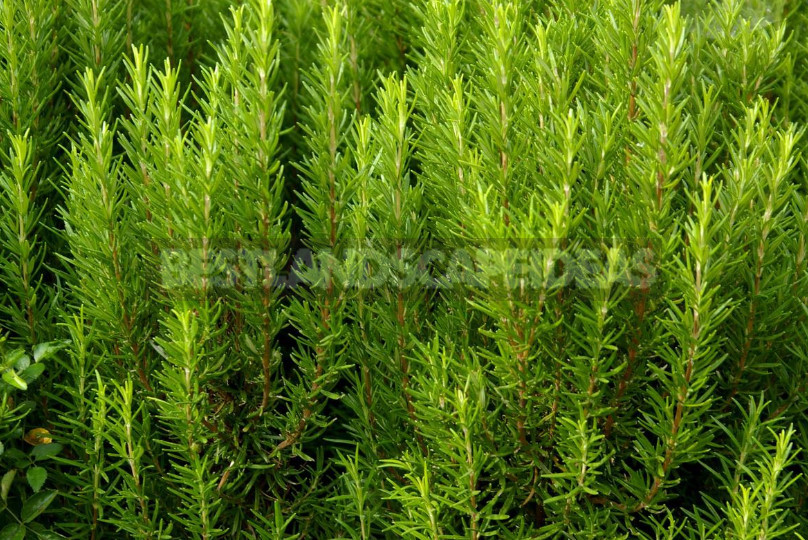
We associate the smell of dill with cuisine, and in Ancient Greece it competed with the scent of roses!
In Ancient Rome, preference was given to mint: mint water sprayed rooms and tables rubbed with leaves to create a cheerful mood of the guests.
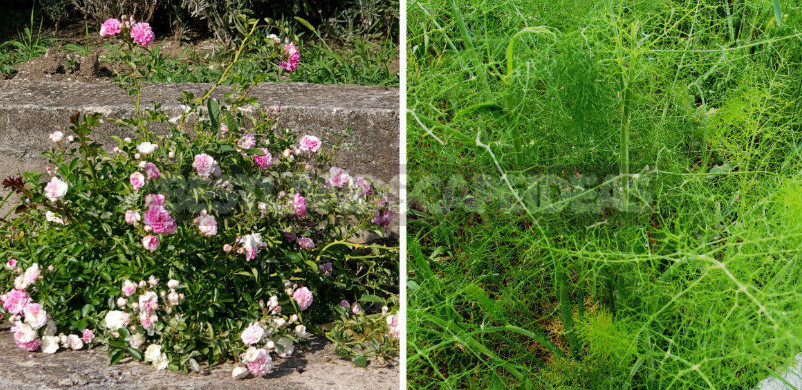
Parsley green decorated homes, leaves used to weave wreaths, which crowned the winners of the Isthmian and Pythian games.
In the middle ages, the “wreath of glory” went to the thyme: it was believed that it gives people strength, so his image is often decorated with scarves knight.
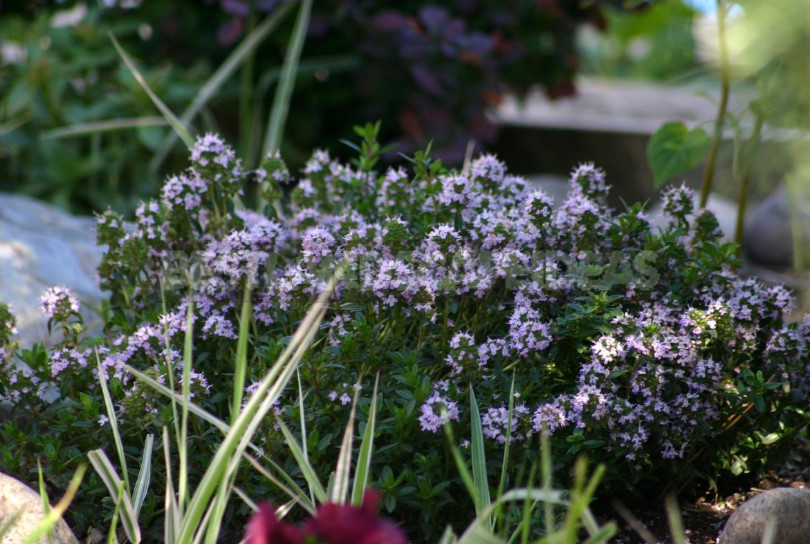
Currently, it is difficult to imagine a kitchen garden without mint, thyme, Basil and so on. Modern varieties of many spicy and flavoring plants are specially created by breeders for pot culture. Year-round grown on glazed balconies (loggias, Bay Windows, kitchens), they become an additional source of environmentally friendly vitamin products.
Well-chosen containers and plants perfectly and adequately complement the style of the interior:
- for Mediterranean suitable Laurel, rosemary, Basil;
- rural — chervil, mint, parsley;
- East Asian — dill, marjoram.
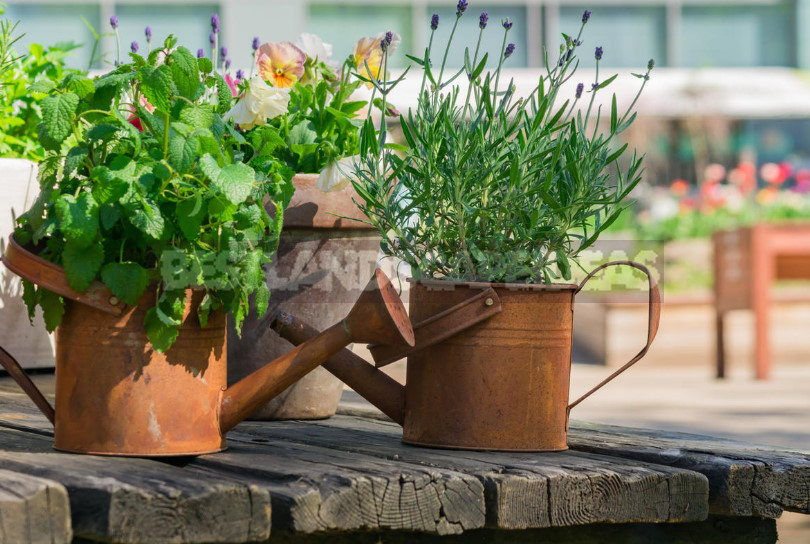
Today it is fashionable, stylish! And not only for aesthetes-gourmets who prefer dishes with spicy taste, unusual aroma and interesting presentation, but also for people who lead a healthy lifestyle and include in their diet a variety of edible plants. How to grow them in pots, we will tell in detail in a series of articles.
Curly parsley
Optimal sowing time from February to March. For sowing use pots, containers or small boxes with drainage holes, special factory designs for growing green crops in indoor conditions.
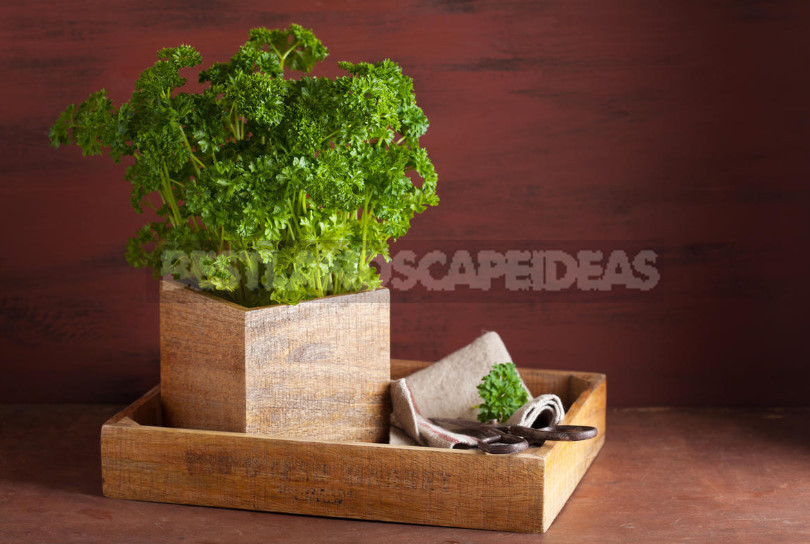
Practical suggestion:
- do not sow parsley in one container with fennel, dill, celery leaf;
- soil substrate need a loose, fertile;
- seeds germinate slowly: increase the germination rate can be by soaking in water for 1-3 days (2 times a day change the water);
- sowing is carried out to a depth of 1.5-2 cm;
- tanks put in a bright warm place, it is possible on window sills of any Windows, except Northern;
- shoots at a temperature of +15…+20°C appear on 15-20 day, when soaked – 5-7;
- seedlings thinned out, leaving between the shoots of 3-5 cm;
- watering regular, abundant, 2 times a month fed universal granular fertilizer (according to the instructions).
immediately before sowing, they are placed for 2 hours in a pink solution of potassium permanganate;
The first flush of greenery accounts for 50-70 a day. After it leave a third of the leaves, watered, fed. If you want to get the seeds of parsley left for a second year, after flowering and seed collection plants are thrown away.
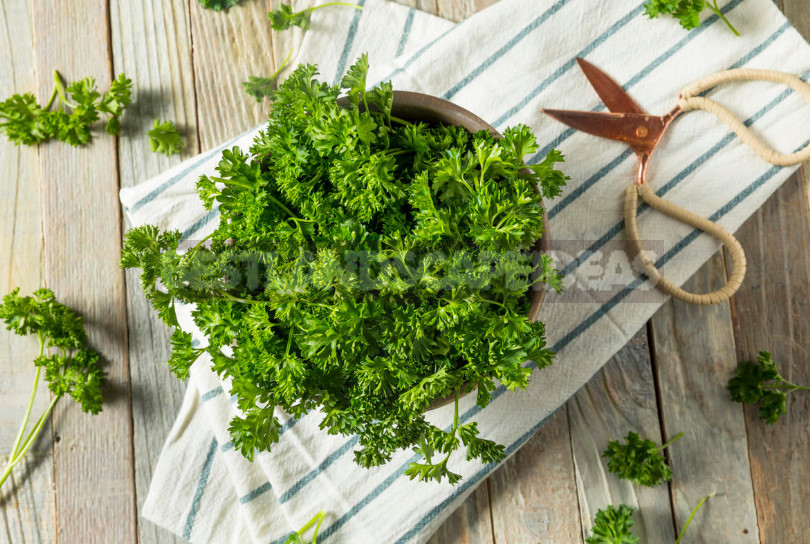
In addition to the leafy varieties of parsley in the indoor environment can grow and root.
For forcing use short roots, planted in containers, pots, the distance between plants 7-8 cm; large roots are planted at an angle. The optimum temperature for distillation +16…+18°C during the day and +10…+14°C at night; duration of forcing 35-40 days. Watering is moderate.
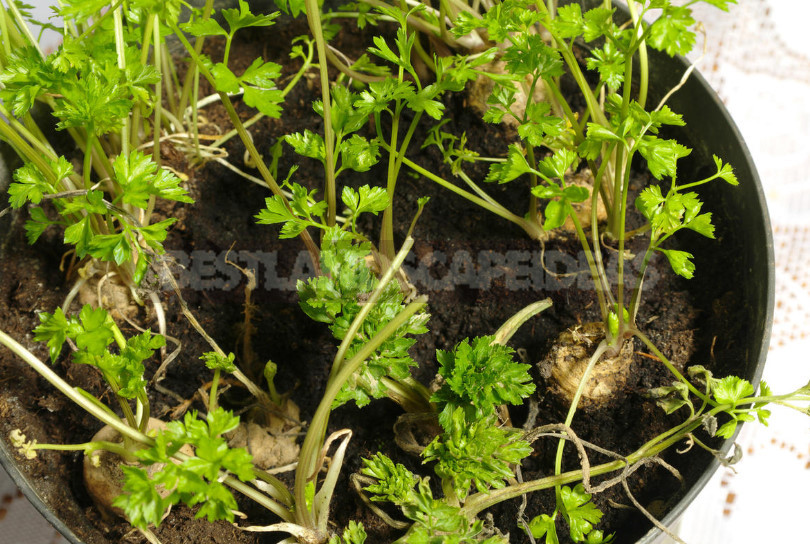
The nuances of using curly parsley
Many famous chefs around the world consider fresh wood notes of parsley a universal aroma that successfully accompanies many products, being part of a number of dishes. There was a time when a sprig of parsley was a must-have addition to any plate of savory snacks. And today it appears at its best with salty products, which generously gives the desired coolness and bitterness, perfectly compensating for the salinity and sweetness of meat – hams, all kinds of fish. The pronounced herbal taste of parsley is great for mixing it with other herbs.
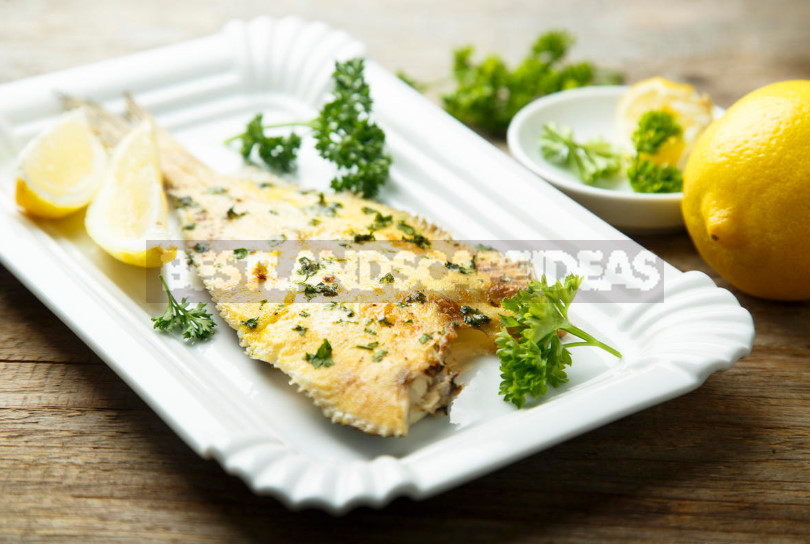
Remember! Parsley is considered a culture that relieves fans of spicy “sinful” smell of garlic.
Odorous dill
If there is a possibility of placing several pots on the windowsills, create a real garden of spicy and flavoring plants, among which dill will take a worthy place. But to grow it in the room is not so easy, you need to know the nuances of sowing, care.
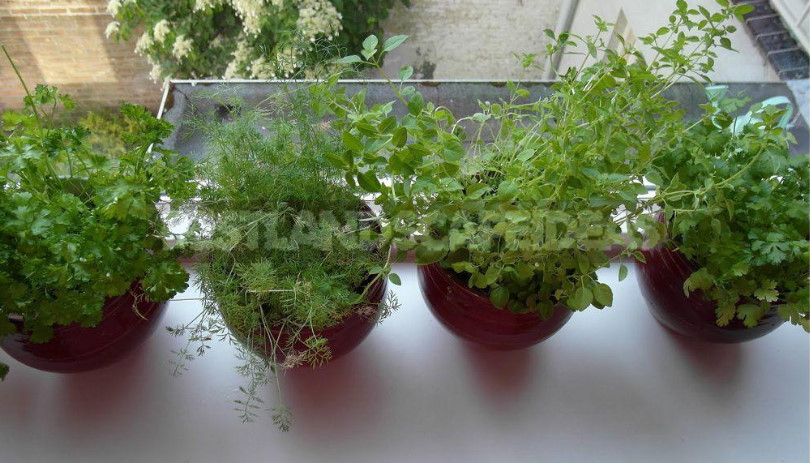
Practical suggestion:
- the soil substrate should be loose, fertile, with a neutral reaction;
- sow several times, at intervals of 30-40 days;
- a seeding depth of 1.5-2 cm;
- seeds begin to germinate at a temperature of +3°C (cold-resistant culture), but the optimal temperature for the growth and development of dill +16…+17°C;
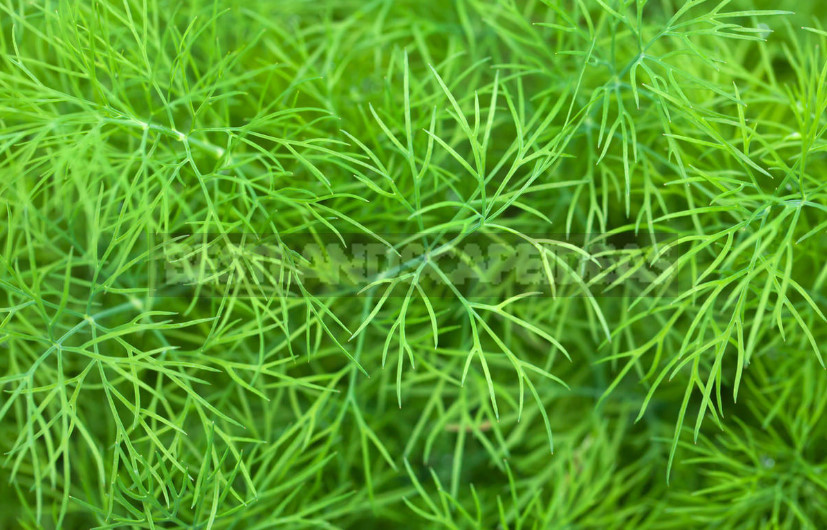
- seedlings thinned, the distance between plants 2-3 cm;
- watering abundant;
- even on the southern window sill in the middle lane and in more Northern regions of the world for the dill a little, in winter need supplementary lighting with fluorescent light (minimum 12 h per day);
- during the growth of a good dressing 1 every 2 weeks with liquid concentrated fertilizer.
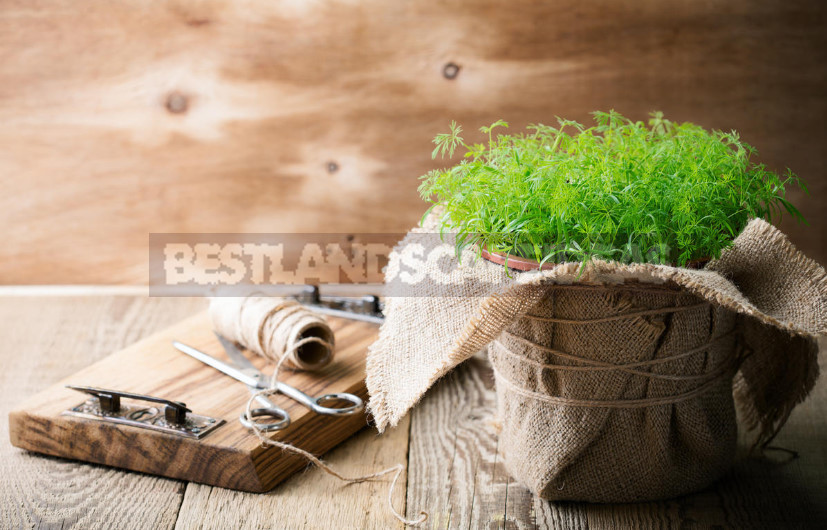
Dill can be damaged by Dysaphis crataegi, causing twisting and drying of openwork leaves; affected by Fusarium and powdery mildew. When growing on greens, treatment is not carried out, but the seeds can be soaked in a weak solution of potassium permanganate, and the seedlings are watered throughout the growing season 1 every 2 weeks with anti-stress bio-solution.
The nuances of the use of fragrant dill
Real gourmets define the taste of dill as “amazing taste of worn leaves”: at first it seems sweet, then turns into pure sour. Perfect for fatty fish, meat, mashed potatoes, vegetables. It also goes well with other traditional sour ingredients: vinegar and lemon.
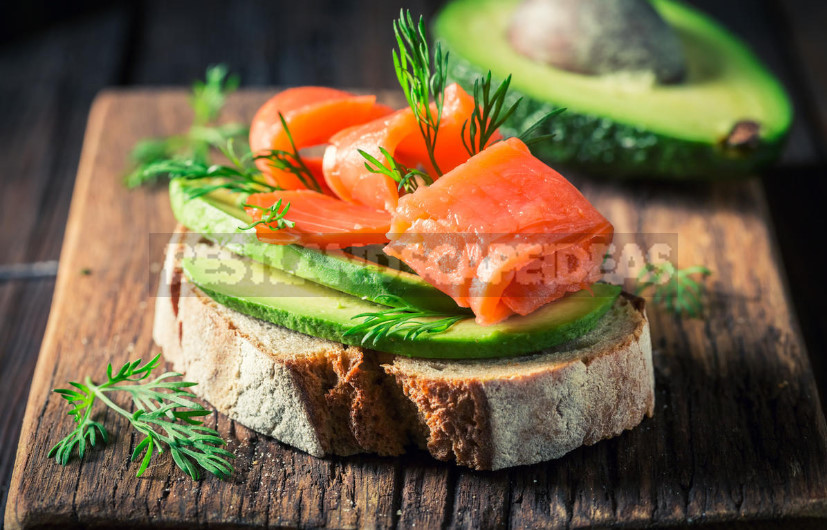
Dill is added to all Nations and in many dishes: for example, in Poland, potato salad is unthinkable without it. In India, the same potatoes are diced and fried with garlic, chili pepper and turmeric, and then sprinkled with a large amount of dill. In Russia, Sweden without dill it is impossible to imagine cooked crayfish and so on.
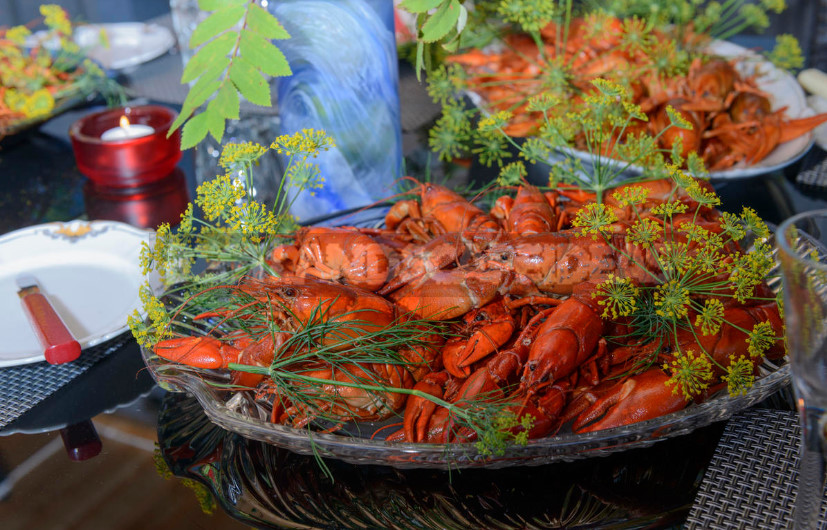
In Laos, dill is considered not as a seasoning, but as a vegetable: umbrellas, the stem is often simply thrown into a pan with other vegetables and fish.
While you are studying the nuances of growing dill and curly parsley in indoor conditions, I will prepare a continuation of the story about spicy and flavoring plants for a stylish kitchen garden.
